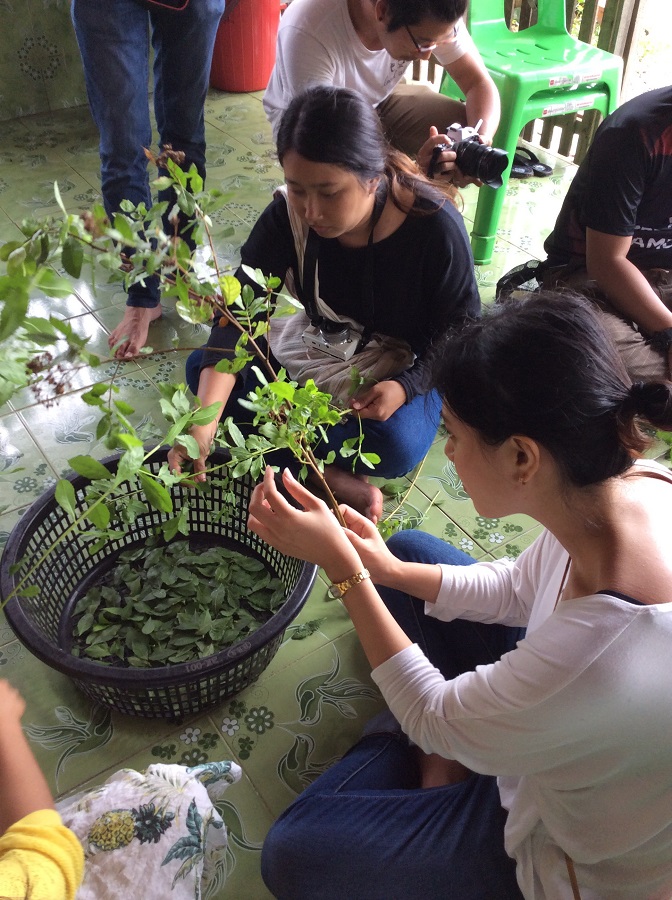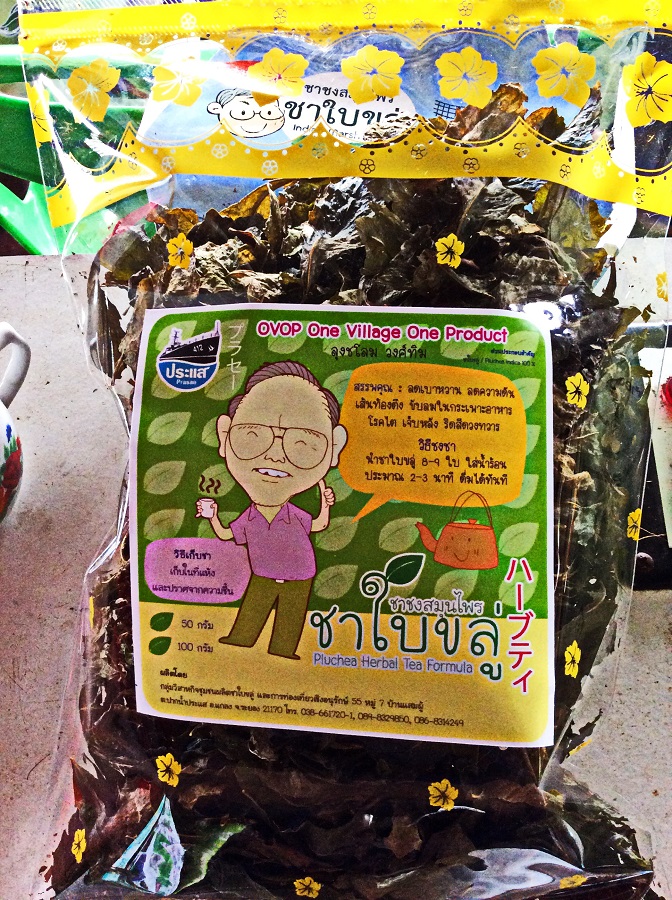
Who would have thought that a common mangrove would yield so much benefits to mankind? Exploring the small town of Prasae in the province of Rayong which is a comfortable two and a half hour drive from Bangkok was a delight. While there are no bustling city sights or late into the night neon street parties, Prasae is a typical fisherman’s town where the simplicity of life is a constant. Located along the coast, living off the seas and mangroves is a way of life for most of the folks in Prasae.

One of the highlights which also happens to be a Royal Project inspired product in Prasae is the Indian Marsh Tea which is from the family of Asteraceae or scientifically known as Pluchea Indica.

Often found in the brackish waters of the coastal areas, it grows wildly and has now been harvested and made into a tea compound. Widely known for its anti-diabetic properties as well as being a diuretic and the ability to lower high blood pressure, it’s mostly consumed in the form of a beverage in dried tea leaves, tea bags or as a cold prepared refreshing drink.
Prasae is one of the coastal places where this plant grows in abundance and is harvested to produce the Pluchea Indica tea. Scientific studies done by the Royal Projects and the marketing assistance through the Royal Project of OTOP shops have made this tea popular as a health supplement in Thailand.

The branches are harvested from marshes and mangroves along the coast and brought to the village processing house. It is still very much a basic cottage industry where most of the work is done by hand. This particular business is done by the community headman and his family who has been harvesting and producing this tea for several decades. Laments the elderly wife of the headman “now, the young generation seldom want to do this laborious work preferring instead to work in the city. Soon there will be no one to take over the business.” is a common problem among the aging community.
However, while it is still operational, the community elders have grouped together to help in the processing and gathering of the branches and in all the various stages of the production.
The branches are first sorted and the leaves are stripped from the branches. Only the better quality leaves are selected, meaning the young shoots and older firm leaves which are then placed into pails and rinsed then allowed to air dry. The dried leaves are then slowly heated in a large wok with mostly the womenfolk constantly watching and stirring the leaves so that it dries evenly over the fire. This may take anywhere up to an hour or more per batch.
Next the pan dried leaves are further dehydrated in an oven to totally remove all moisture, making them dry and somewhat brittle. The final stage of drying will also yield the whole leaves and the broken leaves during the drying process.
Whole leaves are sorted into groups for various packaging whereby the larger leaves are considered the premium quality and often packed into boxes where a few leaves are normally used to make one cup of tea. Smaller broken leaves are further crushed into powder form to be made into teabags.
All the labels are individually attached to the packaging and shipped to the OTOP collection centers for distribution. The village headman also produces a cold bottled beverage made from the tea which is marketed to the convenience stores nearby.
If you visit this place in Prasae, you will always be welcomed by a nice cool refreshing herbal tea drink along with homemade green pea biscuits and a whole lot of hospitality much like most of the folks in Prasae.
[googlemaps https://www.google.com/maps/embed?pb=!1m18!1m12!1m3!1d1024.2382277187166!2d101.71164484432865!3d12.708270223429878!2m3!1f0!2f0!3f0!3m2!1i1024!2i768!4f13.1!3m3!1m2!1s0x310372b5d4b17b61%3A0xf638c1ec0d7d9ddc!2z4Lia4LmJ4Liy4LiZ4LiK4Liy4LmD4Lia4LiC4Lil4Li54LmI!5e1!3m2!1sen!2sth!4v1525005117115&w=600&h=450]
